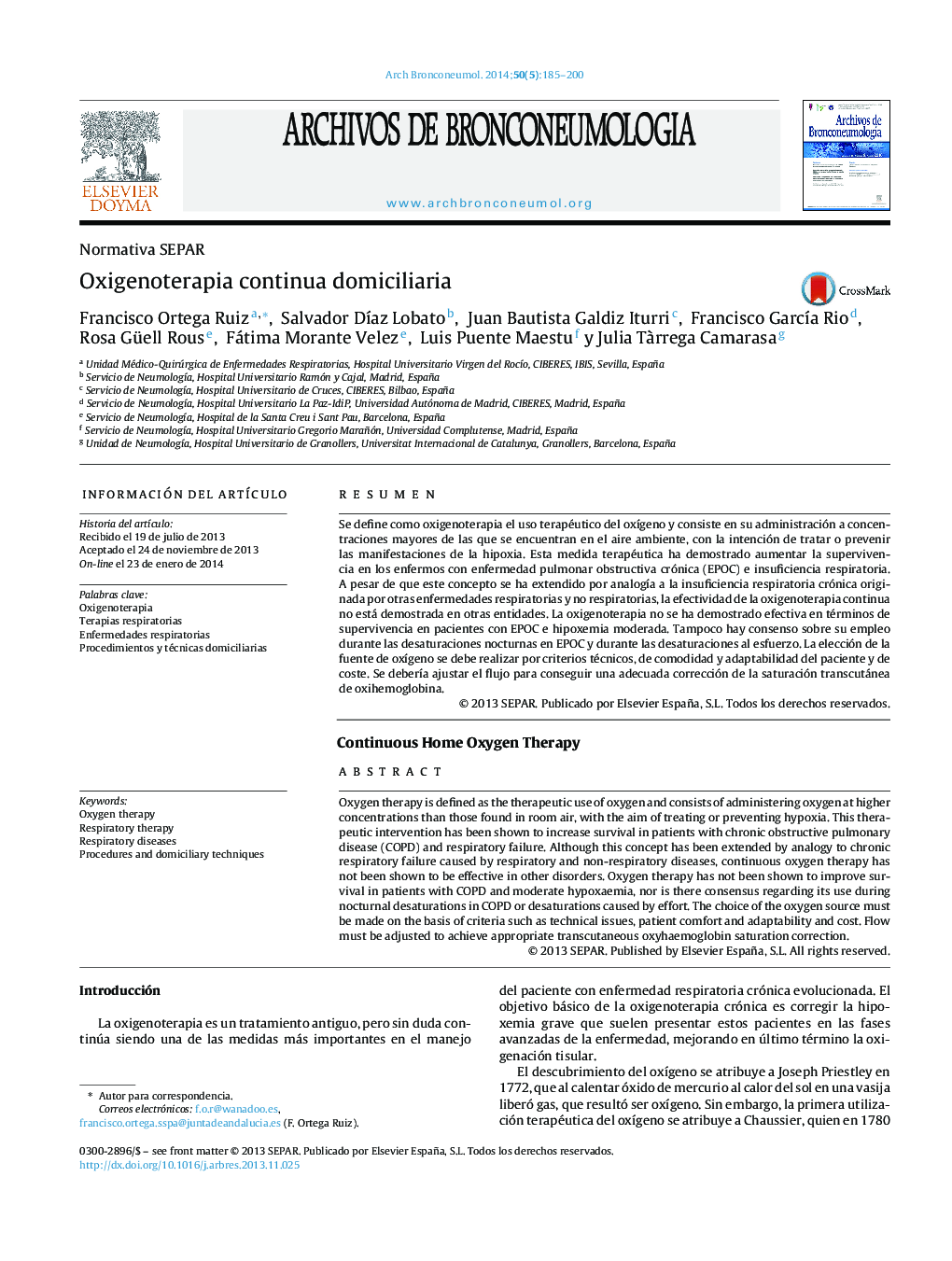| Article ID | Journal | Published Year | Pages | File Type |
|---|---|---|---|---|
| 4203417 | Archivos de Bronconeumología | 2014 | 16 Pages |
Abstract
Oxygen therapy is defined as the therapeutic use of oxygen and consists of administering oxygen at higher concentrations than those found in room air, with the aim of treating or preventing hypoxia. This therapeutic intervention has been shown to increase survival in patients with chronic obstructive pulmonary disease (COPD) and respiratory failure. Although this concept has been extended by analogy to chronic respiratory failure caused by respiratory and non-respiratory diseases, continuous oxygen therapy has not been shown to be effective in other disorders. Oxygen therapy has not been shown to improve survival in patients with COPD and moderate hypoxaemia, nor is there consensus regarding its use during nocturnal desaturations in COPD or desaturations caused by effort. The choice of the oxygen source must be made on the basis of criteria such as technical issues, patient comfort and adaptability and cost. Flow must be adjusted to achieve appropriate transcutaneous oxyhaemoglobin saturation correction.
Keywords
Related Topics
Health Sciences
Medicine and Dentistry
Pulmonary and Respiratory Medicine
Authors
Francisco Ortega Ruiz, Salvador DÃaz Lobato, Juan Bautista Galdiz Iturri, Francisco GarcÃa Rio, Rosa Güell Rous, Fátima Morante Velez, Luis Puente Maestu, Julia TÃ rrega Camarasa,
